Malcolm R. Campbell's Blog, page 201
August 26, 2015
Okay, who in my zip code is an Ashley Madison User?
When I saw the news story These Are the Only Three Zip Codes With No Ashley Madison Users, I would have bet money (a few dollars or so) that our little slice of NE Georgia was on the list.

Over 39,645,000 anonymous members!
After all, according the 2010 demographics, the population of this zip code is only 2,432.
But no, the cheat-free zip codes are Nikolai, Alaska (99691), Perryville, Alaska (99648) and Polvadera, New Mexico (87828).
Okay, I’ll stipulate that the population of all three of those zip codes combined is less than our “neighborhood.”
My theory is that the people in those zip codes are signing up under fake e-mail addresses that purport to come from our zip code.
It’s much easier to assume that than to think, hmm, I wonder if the guy who drove by in that old Ford pickup truck is “out on a date” while his wife cans okra at home.
 Plus, I always thought that those of us who like grits were ever faithful due to the influence of minerals from the granite millstones in the grits that activate the conscience. This is true whether you’re throwing a packet of Quaker grits in the microwave with 1/2 cup of water for 90 seconds or using more exotic recipes out of books like “Good Old Grits Cookbook” or “The Bubba Gump Shrimp Co. Cookbook.”
Plus, I always thought that those of us who like grits were ever faithful due to the influence of minerals from the granite millstones in the grits that activate the conscience. This is true whether you’re throwing a packet of Quaker grits in the microwave with 1/2 cup of water for 90 seconds or using more exotic recipes out of books like “Good Old Grits Cookbook” or “The Bubba Gump Shrimp Co. Cookbook.”
Maybe one clown in our zip code is allergic to grits and/or his/her spouse and ruined the reputation of the whole place when Santa looks at the naughty list. We need to find that person and lure them up to Perryville, Alaska where s/he will either ruin the place or jump on the hooker wagon and off the hookers.
Perhaps a brave soul will put up a fake call girl business card at the seed & feed and the tractor supply company and see if they get any hit-ons. If that fails, maybe our suspect works at a nearby college in, say, the drama department.
If that doesn’t work, we’re going to have to bribe somebody at the cheaters’ record-keeping department to say we’re not doing nothin’ we shouldn’t be doing. Or, make grits mandatory.
Malcolm
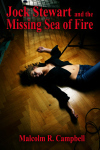 Malcolm R. Campbell is the author of “Jock Stewart and the Missing Sea of Fire,” a comedy/satire with a few characters who might be part of the Ashley Madison family.
Malcolm R. Campbell is the author of “Jock Stewart and the Missing Sea of Fire,” a comedy/satire with a few characters who might be part of the Ashley Madison family.


August 24, 2015
Got Cops on Your Tail? Try oregano.
If you like Italian-American food, grilled chicken and vegetables, or ramping up the dressing for your tossed salad, you probably have oregano on your spice rack.
 I like growing it because fresh is better than dried for most things and it gives a nice scent to the garden. Or, perhaps you use it as a dietary supplement to reduce LDL cholesterol and increase HDL cholesterol.
I like growing it because fresh is better than dried for most things and it gives a nice scent to the garden. Or, perhaps you use it as a dietary supplement to reduce LDL cholesterol and increase HDL cholesterol.
However, unless you’re a fan of folk magic or frequent your neighborhood conjurer, you probably think of this tasty herb primarily as food rather than as protection.
Conjure Uses
Unfortunately, these require a bit of work; that is to say, you won’t keep the cops and annoying lawyers away by putting oregano in your spaghetti sauce.
That would be too easy, right?
 According to catherine yronwode at herb-magic.com, oregano “is widely believed to be a protective herb with the power to ward off troublesome and meddling individuals, especially those who may wish to interfere with one’s personal financial dealings. Furthermore, oregano is said to have significant power to keep the law away.” She is the author of a handy book for conjurers called Hoodoo Herb and Root Magic.
According to catherine yronwode at herb-magic.com, oregano “is widely believed to be a protective herb with the power to ward off troublesome and meddling individuals, especially those who may wish to interfere with one’s personal financial dealings. Furthermore, oregano is said to have significant power to keep the law away.” She is the author of a handy book for conjurers called Hoodoo Herb and Root Magic.
Got Cops, Do This: Dig up the footprint of the police officer and stir it up with oregano, redbrick dust and black mustard seed and place the mixture outside at the corners of your house. A large “X” at your doorsteps will help.
Got Nosy Lawyers, Do This: A mixture of cascara sagrada bark and oregano burnt on charcoal in an ashtray or grill prior to your deposition or court date is said to turn destiny in your favor.
A good conjure woman or curio shop may also recommend burning special incense, using oils and lighting candles in addition to offering you packets of court case and keep-the-law-away powders.
I’m by no means a conjurer. As I research my next book, I am fascinated by the folk magic uses of culinary herbs, plants with purported medical uses and common household materials.
Needless to say, I make no warrants or promises for oregano in your life.
For additional conjure and herb information, see Kitchen Hoodoo -Using Oregano in Hoodoo, Conjure and Candle Spells and Cooking With Magical Herbs.
–Malcolm
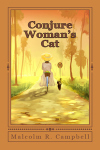 Malcolm R. Campbell is the author of the Jim Crow era novella “Conjure Woman’s Cat” set in a KKK-infested north Florida town in the 1950s.
Malcolm R. Campbell is the author of the Jim Crow era novella “Conjure Woman’s Cat” set in a KKK-infested north Florida town in the 1950s.


August 19, 2015
Briefly Noted: ‘People Before The Park’
People Before The Park, by Sally Thompson, Kootenai Culture Committee & Pikunni Traditional Association (MHS Press, July 2015), 256 pages with photographs.
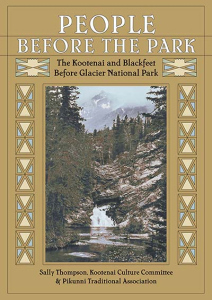 The Great Northern Railway, one of the predecessor roads of today’s Burlington Northern Santa Fe, developed Glacier National Park’s roads, telephone system, power lines and famous hotels as a tourist destination for passengers on its Empire Builder and Western Star trains. The railroad’s influence on the park was immense.
The Great Northern Railway, one of the predecessor roads of today’s Burlington Northern Santa Fe, developed Glacier National Park’s roads, telephone system, power lines and famous hotels as a tourist destination for passengers on its Empire Builder and Western Star trains. The railroad’s influence on the park was immense.
The railroad called the Blackfeet, the Glacier Park Tribe, and often took representatives to faraway cities to advertise the park. The project was much more of an expedient promotion than a true cultural exchange. The soul of the park, however, will always be Kootenai and Blackfeet (Pikunni/Piegan).
When I worked as a bellman at Many Glacier Hotel in 1963 and 1964, I was fascinated by the Blackfeet and Kootenai names for many of the mountains, rivers and creeks. Some years later, while working as an editorial assistant for the first edition of Jack Holterman’s now-classicI learned that these landmarks were given Indian names by early explorers such as James Willard Schultz and George Bird Grinnell. We’ve long needed the park’s story from its original people.
Slowly, some of the official place names are being changed. Some years ago, Trick Falls (named for its odd water flow) was changed to its Blackfeet name, Running Eagle (Pitawmáhkan) Falls. Mt. Wilbur, the distinctive peak across the lake from Many Glacier Hotel, is also hearing its Blackfeet used by bellmen, tour bus drivers, boat crew personnel and others. Now people are beginning to know it as Heavy Shield. One day, perhaps the mountain will hear its name in Blackfeet: Isokwi-awótan
Montana Historical Society
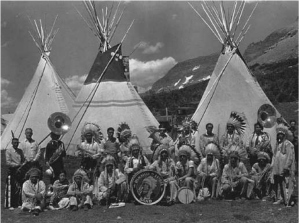
Blackfeet at the July 15, 1933 dedication of Going to the Sun Road, photo by George A. Grant, NPS photo archives.
Now, with the publication by the Montana Historical Society Press of People Before The Park, information that has up to now been mostly confined to books intended for scholars and students of history is now accessible to a wider audience. I hope that the park’s concessionaires are selling this book in the hotel gift shops at Many Glacier Hotel, Lake McDonald Lodge, and Glacier Park Lodge.
From the Publisher
Step out of a world governed by clocks and calendars and into the world of the Kootenai and Blackfeet peoples, whose traditional territories included the area that is now Glacier National Park. In this book, the Kootenai and Blackfeet tribes share their traditions—stories and legends, foodways and hunting techniques, games and spiritual beliefs. Readers will discover a new respect for the people who were at home in the Crown of the Continent, all around the seasons. Sally Thompson has spent over thirty years working with the tribes of the Rocky Mountain West to tell history from their points of view. Her most recent work focused on repatriating human remains and sacred objects to tribes.
A Reviewer’s Perspective
“Thompson decided to take a different approach to the book. Rather than write it all herself, she asked the Kootenai Cultural Committee and the Blackfeet’s Pikunni Traditional Association to each author their own chapter.
“The result is a book that tells a descriptive story that comes alive for the reader. Historical photos are featured throughout the book. Thompson provides introductory geographical and cultural information and provides evidence of early trails through the park.” – Erin Madison in the Great Falls Tribune
Every hiker needs several things in his/her backpack: map, matches, flashlight, water, food, bear spray and a copy of this book. As always, the place tells us about the people who live there and the people who live there enhance our knowledge of the place.
–Malcolm
 Malcolm R. Campbell is the author of two novels set partially in Glacier National Park, “The Sun Singer” and “Sarabande.”
Malcolm R. Campbell is the author of two novels set partially in Glacier National Park, “The Sun Singer” and “Sarabande.”


August 18, 2015
No, doc, I don’t want Bette Davis eyes
A year ago, my optometrist said, “you’re going to need to do something about the cataract in your right eye.”
Thinking he meant, a waterfall, I said I hadn’t been dripping water, tears-wise or otherwise.
 He informed me that I was going to have trouble seeing within the year.
He informed me that I was going to have trouble seeing within the year.
Noticing that I was driving blind more often than not, I went to an eye doctor a week ago and he said, “Holy crap, man, you’re still looking at the world with eyes made during World War II when factories slapped out millions of eyes per second without a lot of paperwork for the war effort.”
He surfed out to Wikipedia where he gets most of his medical information and showed me an eye diagram. “When you were born, we didn’t know about half this stuff, so your eyes not only aren’t compatible with Windows 10, you’re missing a lot of the world’s important developments such as texting and more nudity.”
He got out a catalogue published by the American Academy of Ophthalmology called “Fabulous Eyes.” It contained a list of the replacement eyes available for those of us about to undergo cataract surgery.
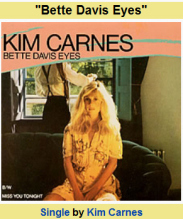 “There’s been a run on Bernie Sanders eyes lately, and that means a waiting list. Since you’re a writer, maybe you’ll want something exotic like Bette Davis eyes.”
“There’s been a run on Bernie Sanders eyes lately, and that means a waiting list. Since you’re a writer, maybe you’ll want something exotic like Bette Davis eyes.”
“I remember the song,” I said.
“According to the song, with these eyes you’ll either know how to make a ‘crow blush’ or a ‘pro blush’ depending on which recorded version of the song you like.”
I informed him that Bette Davis’ eyes were older than the ones I was currently using and probably had fewer working parts.
As it turns out, there are more eyes out there than you can poke out while running with scissors. Since they (the eyes) are purportedly windows of the soul, I didn’t want to make a flippant choice. Truth be told, I’ve gotten used to the way I’ve always seen things even though I’m seeing less other them.
In “My Ancestor Was an Ancient Astronaut,” Toba Beta wrote, “Eyes shows lies.” That ruled out a lot of eye models, especially those from celebrities, political candidates and serial killers.

Muir-Einstein-Newman Eyes, Model “MENJ38-25774.”
Finally, it appeared that I was best suited for a combination eye, one with the attributes of John Muir, Albert Einstein and a dash of Paul Newman. “Eyes don’t make you smart,” the doc cautioned, saying that I shouldn’t expect to be rich and famous with rich and famous eyes looking out at the world.
“With the MENJ38-25774 eyes, you might go into the salad dressing business or be able to shoot a good game of pool.”
“More likely,” I said, seeing through my glasses darkly, “I’ll turn into Brick Pollitt and say, ‘I’m ashamed, Big Daddy. That’s why I’m a drunk. When I’m drunk, I can stand myself.'”
“That can happen,” he said. “My assistant here thinks she’s Helen of Troy and wants go go into the ship launching business.”
Frankly, I thought his assistant looked more like Bette Davis.
–Malcolm
 Malcolm R. Campbell is the author of “Jock Stewart and the Missing Sea of Fire,” a satire similar to this post in that it has characters who are likely to say anything (and often do).
Malcolm R. Campbell is the author of “Jock Stewart and the Missing Sea of Fire,” a satire similar to this post in that it has characters who are likely to say anything (and often do).


August 16, 2015
10, 11 (or maybe 12) things you don’t know about me
Every 25-30 seconds, I see a new article about a celebrity (that I usually haven’t heard of) called something like 25 things you don’t know about ___________ (whoever)
 I don’t know why I click on those stories because most of the things on the list are boring and/or fall into the TMI (to much information) category. No doubt, some massive computer somewhere records my click, gives the site a higher rating, and insures that I’ll probably be bothered by a lot more of these kinds of stories the next time I show up on the Yahoo home page.
I don’t know why I click on those stories because most of the things on the list are boring and/or fall into the TMI (to much information) category. No doubt, some massive computer somewhere records my click, gives the site a higher rating, and insures that I’ll probably be bothered by a lot more of these kinds of stories the next time I show up on the Yahoo home page.
You never click on those do you? If not, how did you show up on this post? Okay, since you’re here (and the NSA already knows you’re here), you might as well read the list.
Barbra Streisand and I share a fear. We both get stage fright every time we walk in front of a large audience. I solved that by not doing it (walking in front of a large audience) while she solved it by singing.
 The first actress I had a crush on was Millie Perkins. Since you probably don’t know who that is, this proves I’m a lot older than you. She never wrote back so nothing came of it.
The first actress I had a crush on was Millie Perkins. Since you probably don’t know who that is, this proves I’m a lot older than you. She never wrote back so nothing came of it.I was raised by alligators in a Florida swamp. Sure, I had regular parents and they were nice people, but they weren’t as exciting as the gators. I learned more from gators than I did from my school teachers. I’ve kept this secret all the years because, well, who the hell knows why, maybe because I didn’t figure anyone would believe it. I’m not even sure I believe it, even though I remember Papa Gator telling me that tourists love gators.
 Although my first language was (and still is) English, my grade school and junior high school English teachers didn’t think so because I made lousy grades. I knew how to speak and write my native tongue, but couldn’t force myself to study grammar, learn parts of speech and do other silly things. (Hell is an afternoon spent diagramming sentences on the chalkboard.)
Although my first language was (and still is) English, my grade school and junior high school English teachers didn’t think so because I made lousy grades. I knew how to speak and write my native tongue, but couldn’t force myself to study grammar, learn parts of speech and do other silly things. (Hell is an afternoon spent diagramming sentences on the chalkboard.)
Tempura – If I’d spent ten years learning how to cook, I’d be better off than a failed piano player
I took piano lessons (against my will) for some ten years and now I can proudly say that I can play chopsticks with fewer errors than people who think chopsticks are only used for eating tempura and other cool foods. I happen to like tempura, but most people don’t. As an experiment, ask some random guy on the street what he thinks of tempura and he’ll probably tell you it’s a kind of paint.
One reason I didn’t go “the Barbra Streisand route” to conquer my stage fright was simply that I can’t sing. I learned this on the job when I delivered signing telegrams to people’s houses and didn’t get any tips. I did better with regular telegrams and candygrams. Yes, I know, I sound like some guy who grew up on the frontier when I mention delivering telegrams. No, I didn’t ride a horse.
I kept this ancient radio until we moved last year. I found a guy who actually knew what it was and had been looking for one to restore.
I was a ham radio operator when I was in high school and once had my receiver on radio Moscow because our high school band was playing some Russian music. A visitor to our house thought I should tell the Feds that I was picking up “the commies” on my radio. Goodness knows what he told his folks when he got home. I still know Morris Code but there’s not a lot of call for it.
Magician card in old Tarot deck.
I believe in magic. As a writer, this has caused problems with some magazines and publishers who wanted me to place my work in the fantasy or paranormal genres while I was complaining, “but this stuff actually happened.” I lost all those arguments. My parents (not the alligators) weren’t comfortable with my all my magic books, telling me that later in life, people would just assume I was crazy. They were right about that.
I’m a Leo. Okay, I guess you probably already figured that out. Madonna and I used to sit in one of those Rocking Chairs on the front porch of a Cracker Barrel restaurant and talk about the Kabbalah until too many people started taking selfies with us in the background. Frankly, I think they cropped me out of them, the bastards.
Madonna and I used to sit in one of those Rocking Chairs on the front porch of a Cracker Barrel restaurant and talk about the Kabbalah until too many people started taking selfies with us in the background. Frankly, I think they cropped me out of them, the bastards.
Contrary to popular belief, I was not born on a table top in Tennessee and did not kill my first bear when I was only three.
Mercifully, this list is coming to and end with the news that I tend to put hexes on people who don’t read my books or who give them bad reviews (or no reviews). Since you don’t believe this, there’s nothing to worry about. :-)
–Malcolm
 Malcolm R. Campbell looked up how to put hexes on people while working on his novella “Conjure a Woman’s Cat.”
Malcolm R. Campbell looked up how to put hexes on people while working on his novella “Conjure a Woman’s Cat.”


August 13, 2015
Thank you to my 26,250 visitors
 This blog has been staggering along for awhile like a sailor trying to find his way back to the ship after a night on the town in a foreign port. (Been there, done that.)
This blog has been staggering along for awhile like a sailor trying to find his way back to the ship after a night on the town in a foreign port. (Been there, done that.)
When I started Malcolm’s Round Table, I was thinking of King Arthur (indirectly in my family tree) and the Knights of the Round Table. Not that I would admit that I was looking for the Holy Grail. I had no idea what I was going to say or that I’d end up saying it for some 1,050 posts about everything from writing to Glacier National Park, to the USS Ranger to the Florida locations for some of my recent stories.
Somehow along the road, 26,250 of you stopped by for some 83,252 visits. And, according to the WordPress gurus, the busiest time has been Thursday at 2 p.m. This tells me you guys are logging on at work after drinking your lunch.
Seriously, were you trying to stay awake or were you looking for the Holy Grail? (And, were you successful in either quest?) Truth be told, I bring to this blog and to most of my fiction the premise that every one of us is on a hero’s journey in search of that moment and/or that insight that transforms us into the individual we were destined to become if we allowed it to happen.
In my novel The Sun Singer, I explore the hero’s journey from a masculine perspective. In Sarabande, I look at the journey from a feminine perspective. A recent article on Brain Pickings called “If Librarians Were Honest” caught my attention because it’s based on the premise that “If librarians were honest, they would say, No one spends time here without being changed…”
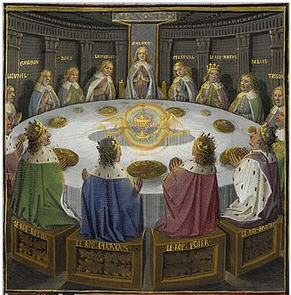
Vision of the Holy Grail at the Round Table.
Hero’s and Heroine’s journeys change us, often in spectacular ways under dangerous circumstances. Libraries can also change us. Potentially, every book, article, and post we read will change us a little or a lot. We never quite know at the beginning of a journey or a book, just who we will be at the end of it.
So, it’s a glorious risk, right?
Perhaps I should have posted this yesterday on my birthday because each of your visits is a gift. It’s a gift of your time, just as reading The Sun Singer, Sarabande, and Conjure Woman’s Cat is a gift of your time. Perhaps you felt different when you finished some of the posts and some of my stories.
Or, perhaps you were changed in imperceptible ways. If you’re also a writer, you will know that you not only change as you read but also as you write. I’m slightly different than I was when I wrote, “This blog has been staggering along for awhile like a sailor trying to find his way back to the ship after a nigh on the town” at the beginning of this post.
We don’t often notice the smallest changes in ourselves because movies and books lead us to believe that when we find the Holy Grail, we’ll find it all at once rather than little by little. Perhaps we need a magic mirror that shows us, not how we’ve aged over time, but how we’ve changed.
If we did, I think we’d not only be surprised by the results, but we’d all feel a lot better about ourselves. At any rate, that’s why I write and that’s why I’m happy that 26,250 of you have stopped by to read.
–Malcolm
 Malcolm R. Campbell is the author of the 1950s-era novella “Conjure Woman’s Cat” about a conjure woman who fights back against the KKK with folk magic.
Malcolm R. Campbell is the author of the 1950s-era novella “Conjure Woman’s Cat” about a conjure woman who fights back against the KKK with folk magic.
Visit my website to learn more.


August 12, 2015
Briefly Noted: ‘The Ghost of Milagro Creek’ by Melanie Sumner
Some books immerse readers into other worlds. This is one of them. Welcome to a New Mexico barrio where love and murder, and ghosts and the living become tangled up in a conscious landscape.
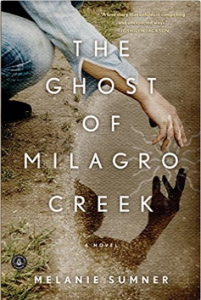 Georgia author Melanie Sumner (“How to Write a Novel,” “The School of Beauty and Charm,” and “Polite Society”) found her inspiration for the novel while living in New Mexico. She researched serial killers for a model for the protagonist for The Ghost of Milagro Creek (Algonquin, 2010) and struck out. Remembering the advice of her creative writing instructor, she realized serial killers are heartless and her protagonist very much needed a heart.
Georgia author Melanie Sumner (“How to Write a Novel,” “The School of Beauty and Charm,” and “Polite Society”) found her inspiration for the novel while living in New Mexico. She researched serial killers for a model for the protagonist for The Ghost of Milagro Creek (Algonquin, 2010) and struck out. Remembering the advice of her creative writing instructor, she realized serial killers are heartless and her protagonist very much needed a heart.
Mister does have a heart and it will make you cry.
From the Publisher

Sumner
“The story of Ignacia Vigil Romero, a full Jacarilla Apache, and the two boys, Mister and Tomás, she raised to adulthood unfolds in a barrio of Taos, New Mexico—a mixed community of Native Americans, Hispanics, and whites. Now deceased, Ignacia, a curandera—a medicine woman, though some say a witch—begins this tale of star-crossed lovers.
“Mister and Tomás, best friends until their late teens, both fall for Rocky, a gringa of some mystery, a girl Tomás takes for himself. But in a moment of despair, a pledge between the young men leads to murder. When Ignacia falls silent, police reports, witness statements, and caseworker interviews draw an electrifying portrait of a troubled community and of the vulnerable players in this mounting tragedy. Set in a terrain that becomes a character in its own right, The Ghost of Milagro Creek brilliantly illuminates this hidden corner of American society.”
Reviewer’s Comment: “[Ghost of Milagro Creek] is a little miracle for the way it bridges and leads and leaps, the way it frustrates and calms and punishes the reader who willingly goes willingly over these stepping stones…I found this novel worth my time, and so feel it will be worth yours, especially if you have an interest in New Mexico, in American Indian cosmology, in narrative structure and approaches, in good storytelling.” – The Rumpus
Beginning of Chapter One: “When I passed away, some people swore that Andre Pettit whould refused me a proper Christian burial. Only in Taos, Mexico, they said, would you hold a wake for a witch. In the barrio at the edge of town, my neighbors called ne Abuela, which means grandmother, but behind my back, their tongues snapped like flags in the wind.”
Bottom line: a wild pilgrimage through forbidden territory.
–Malcolm
 Malcolm R. Campbell is the author of “Conjure Woman’s Cat.”
Malcolm R. Campbell is the author of “Conjure Woman’s Cat.”


August 7, 2015
Has Oprah called yet?
Me: Has Oprah called yet?
Publisher: No, but I hear she’s been busy this week.
While this version of Has Hollywood called? or Did we get anything back from the New York Times? is an on-going joke, it represents the secret hope of many writers.
 We hope somebody influential will see our manuscript or finished book and show it to somebody else who will take it to the right people and, voila! it’s suddenly being turned into a movie with Oscar Buzz surrounding it.
We hope somebody influential will see our manuscript or finished book and show it to somebody else who will take it to the right people and, voila! it’s suddenly being turned into a movie with Oscar Buzz surrounding it.
Years ago, I sent Writer’s Digest Magazine a terse letter about their featured profiles of “writers who have made it.” I haven’t read the magazine for years, but at that time, it was filled with how-to articles and tips covering everything from writing well, to creating a query letter to finding an agent or a publisher. These articles represented, I think, the best thinking at the time about turning one’s wont to write into a published novel.
 Most issues also featured a writer who was finally published. These profiles pointed out that the writer spent years perfecting his or her craft, revising and editing and rewriting and then went onto their saga of query letters and rejection slips and never giving up hope. That is, they dutifully followed all the magazine’s directions for success.
Most issues also featured a writer who was finally published. These profiles pointed out that the writer spent years perfecting his or her craft, revising and editing and rewriting and then went onto their saga of query letters and rejection slips and never giving up hope. That is, they dutifully followed all the magazine’s directions for success.
Then, near the end of the article, something magical happened. An agent happened to move in next door, a famous writer stopped by the house at a garage sale, somebody in the publishing biz was looking in dumpsters and found a coffee-stained draft of the novel and, voila, the writer was discovered.
After reading these profiles for years, I finally got fed up because every one of them ended with a magical event of some kind. Following the magazine’s how-to articles might have helped the writers become prepared for the magic. But none of them showed a writer succeeding without being rescued, found, discovered or stumbled over by an publishing angel who could make things happen.
Writer’s Digest never responded to my letter.
 The results of the magazine’s approach are probably similar to the results of many biographies and feature articles about now-famous writer who were discovered by somebody sometime.
The results of the magazine’s approach are probably similar to the results of many biographies and feature articles about now-famous writer who were discovered by somebody sometime.
We’ve all been brainwashed into thinking that without being discovered, our books will never reach the New York Times Bestseller list. (Actually, that might be true.)
We’ve been taught to follow the best and the brightest of the gurus of the day when it comes to writing well, building a platform, paying for a good editor, promoting our books, getting interviewed and going on blog tours and heading to one convention of another.
Yeah, I’ll do all that. But secretly I know that nothing will happen until Oprah calls and the world turns on its axis causing my publisher to say, “MGM says they’re ready to rock and roll.
–Malcolm
 Malcolm R. Campbell is the author of “Conjure Woman’s Cat,” a novella set in the Jim Crow era of the Florida Panhandle that features Eulalie battling the KKK with folk magic.
Malcolm R. Campbell is the author of “Conjure Woman’s Cat,” a novella set in the Jim Crow era of the Florida Panhandle that features Eulalie battling the KKK with folk magic.


July 29, 2015
Just starting out? Beware of Magical Realism
Once upon a time, when teachers said “You can’t do XYZ in your writing,” I listed famous authors who did it all the time. The teachers’ responses were all the same: “When you’re famous you can do that.”
 Some publishers also have this theory and, I’ll stipulate that they’re not totally wrong. If you’re thinking about magical realism as your prospective genre of choice, be careful. Some publishers abhor the label and claim it’s merely an uppity name for fantasy and/or that it means the author has “literary fiction pretensions.”
Some publishers also have this theory and, I’ll stipulate that they’re not totally wrong. If you’re thinking about magical realism as your prospective genre of choice, be careful. Some publishers abhor the label and claim it’s merely an uppity name for fantasy and/or that it means the author has “literary fiction pretensions.”
In general, except when we’re talking big names and/or big advertising budgets, fantasy finds more readers than magical realism and commercial fiction finds more readers than literary fiction (or fiction perceived as literary).
What happens if you’ve written a magical realism novel? Don’t let the publisher sell it as fantasy. Fantasy readers expect certain things. Most genre readers do. So, if your magical realism novel is slotted into the fantasy genre, it probably won’t sell. Readers will either be disappointed or stay away in droves. Others will post negative reviews that are hard to survive.
It’s a catch-22 thing. Yes, magical realism is typically listed as a subset of fantasy. That’s a mistake, but “they didn’t ask me.” Magical realism uses magic that the characters don’t see as unusual or out of place in a setting that is otherwise very realistic. Fantasy readers aren’t going to buy that as fantasy. So, what do you do?
I guess if HarperCollins has given you a $100,000 advance, you keep your mouth shut. Otherwise, get another publisher or publish the book yourself. Or, if you want a slightly easier career, you might consider writing fantasy and then shifting into magical realism before you become to typecast as a fantasy writer only.
Three of my novels are out of print because the publisher not only sold them as fantasy but removed the more subtle magical realism in favor of the more overt magic of fantasy. I don’t have the stamina to re-write them. Of course, they might have been a dead horse: they might have crashed and burned no matter what genre we put them in.
I love the art and craft of writing and that means I write about the world the way I see the world. I see the subtle workings of magic in daily life. Am I a shaman? Am I psychic? Am I crazy? Am I in need of stronger medications?
Who cares?
 The late, highly creative Brazilian author Clarice Lispector (“A Breath of Life”) said, “I write as if to save somebody’s life. Probably my own.” Now that’s true of most of us who write. The reader doesn’t care whether we’re crazy as long as they’re getting a wonderful story.
The late, highly creative Brazilian author Clarice Lispector (“A Breath of Life”) said, “I write as if to save somebody’s life. Probably my own.” Now that’s true of most of us who write. The reader doesn’t care whether we’re crazy as long as they’re getting a wonderful story.
Only you know how your writing ends up the way it does. That’s between you and your muse. Sure, others can help you make it better. They’re called editors and publishers (if you pick the right ones). But when the cows finally come home–and they will–you have to be happy with it because it is a part of you.
If you see magic in the world, don’t let anyone else say that you don’t and turn your novel into something it isn’t. You have to be who you are and let the spirits and spells fall where they may.
–Malcolm
–Malcolm
This post is part of the Magical Realism Blog Hop. About twenty blogs are taking part in the hop. Over three days (29th – 31st July 2015) these blogs will be posting about magical realism. Please take the time to click on the button above to visit sit them and remember that links to the new posts will be added over the three days, so do come back to read more.The button should go live on or after 12:01 a.m. July 29th.
 Malcolm R. Campbell is the author of “Conjure Woman’s Cat,” a magical realism novella folk magic in the Jim Crow era of the Florida Panhandle where granny and her cat take on the Klan.
Malcolm R. Campbell is the author of “Conjure Woman’s Cat,” a magical realism novella folk magic in the Jim Crow era of the Florida Panhandle where granny and her cat take on the Klan.


July 28, 2015
Magical Realism: betwixt and between
 In folklore, mythology and fantasy, and real or acted-out rites of passage, the boundaries where worlds meet are variously considered volatile, dangerous and rich in possibilities. Why is a bride carried over the threshold? Yes, it’s traditional, but it harkens back to the notion that a doorway was a dangerous boundary.
In folklore, mythology and fantasy, and real or acted-out rites of passage, the boundaries where worlds meet are variously considered volatile, dangerous and rich in possibilities. Why is a bride carried over the threshold? Yes, it’s traditional, but it harkens back to the notion that a doorway was a dangerous boundary.
Myths and superstitions have flourished around the doorways, thresholds, crossroads, the littoral between ocean and beach, the lines where forests and meadows meet, dusk and dawn, and other dividing lines between realities.
You’ll find these “uncertain places”—as Lisa Goldstein calls them in her fantasy by that name—referred to as “neither here nor there” and “betwixt and between.”
 In his groundbreaking The Hero with a Thousand Faces, Joseph Campbell writes that in the hero’s journey, “A hero ventures forth from the world of common day into a region of supernatural wonder: fabulous forces are there encountered and a decisive victory is won: the hero comes back from this mysterious adventure with the power to bestow boons on his fellow man.” Strategic points in this journey occur where worlds and realities meet.
In his groundbreaking The Hero with a Thousand Faces, Joseph Campbell writes that in the hero’s journey, “A hero ventures forth from the world of common day into a region of supernatural wonder: fabulous forces are there encountered and a decisive victory is won: the hero comes back from this mysterious adventure with the power to bestow boons on his fellow man.” Strategic points in this journey occur where worlds and realities meet.
Even in a contemporary fantasy such as the Harry Potter series, the magic of Hogwarts is distinguished from the unknown and potentially darker magic of the forest. However, as Luke in Star Wars and Harry in Rowling’s series learn, the hero doesn’t grow within, much less advance on the physical part of his/her journey without going into the swamp, the dark forest, or the unknown world outside the city gates.
Magical Realism
Magical realism usually focuses upon the boundaries between the worlds of the known and the unknown. The stories combine the natural and the supernatural in a straightforward manner and without commentary or judgement as equally real. Characters dance back and forth across the “uncertain places” as the stories progress.
In a fantasy novel, the characters approach and enter supernatural worlds while noting they’re stepping into realms that are acknowledged as magical, different or strange. In a magical realism novel, events or places that readers may consider supernatural are, by contrast, accepted by the characters as no more or less real than the everyday science and technology world in place at the time when the novel is set.
 Gloria Naylor’s novel “Mama Day” is a perfect example of the juxtaposition of realms. Her first novels, The Women of Brewster Place and Linden Hills took a realistic approach. However, in writing Mama Day, Naylor said, “I needed to find a way structurally to have you walk a thin line between that which is real and that which is real.”
Gloria Naylor’s novel “Mama Day” is a perfect example of the juxtaposition of realms. Her first novels, The Women of Brewster Place and Linden Hills took a realistic approach. However, in writing Mama Day, Naylor said, “I needed to find a way structurally to have you walk a thin line between that which is real and that which is real.”
New York City in this novel represents the real. The fictional Willow Springs, on an island near the Georgia and South Carolina border represents what—in our consensual everyday reality—is not real. Writing in Challenging Realities: Magical Realism in Contemporary American Women’s Fiction, Maria Ruth Noriega Sanchez says that Naylor’s novel is an “extraordinary exploration of the intangible and the power of belief that brings into question the limits or reality and truth.”
Naylor’s approach to magic in Mama Day can be seen in my favorite passage from the novel: “She could walk through a lightning storm without being touched; grab a bolt of lightning in the palm of her hand; use the heat of lightning to start the kindling going under her medicine pot. She turned the moon into salve, the stars into swaddling cloth, and healed the wounds of every creature walking up on two or down on four.”
If this were written in a realistic novel, Naylor would have produced something more like this: “She could purportedly walk through a lightning storm without being touched; imagine grabbing a bolt of lightning in the palm of her hand; or appear to use the heat of lightning to start the kindling going under her medicine pot. In her dreams, she turned the moon into salve, the stars into swaddling cloth, and healed the wounds of every creature walking up on two or down on four in her mind’s eye.”
 Realism demands the qualifying words and phrases. Magic realism omits them and keeps the reader guessing and unsettled about what is really happening in the uncertain realms that are betwixt and between.
Realism demands the qualifying words and phrases. Magic realism omits them and keeps the reader guessing and unsettled about what is really happening in the uncertain realms that are betwixt and between.
In this passage from Laura Esquivel’s Like Water for Chocolate, “Her body was giving off so much heat that the wooden walls began to split and burst into flame,” the reader finds no “as if,” “as though,” or other qualifiers to indicate the event is figurative—because it isn’t. How you react to that as a reader depends on how you see the world and/or on how well the author has enchanted you to see things differently while reading the book.
In Mark Helprin’a Winter’s Tale, Peter Lake is riding Athansor, a guardian angel in the form of a horse: “They got up steam and proceeded calmly to the north – where there seemed to be no people, but only mountains, lakes, reedy  snow-filled steppes, and winter gods who played with storms and stars.” Here again, the winter gods are mentioned as matter of factly as the mountains and lakes.
snow-filled steppes, and winter gods who played with storms and stars.” Here again, the winter gods are mentioned as matter of factly as the mountains and lakes.
When initiates go through a ritual, they begin with the everyday world and end up transformed in some way. The place where these two stages meet is often called “liminality.” Here the initiate is not quite who s/he was and not quite who s/he will become.
Early studies in this area were done by Arnold van Gennep, who coined the word, in his 1909 book Rites de Passage. Folklore, myth, fairytales and stories following the “hero’s journey” typically involve plots  and scenes that are similar to rites of passage. The protagonist is buffeted by storms, monsters, magic forces, conscious landscapes and other dangers during his/her physical and inner journey to the intended destination.
and scenes that are similar to rites of passage. The protagonist is buffeted by storms, monsters, magic forces, conscious landscapes and other dangers during his/her physical and inner journey to the intended destination.
Magical realism lives at that liminal point, leaving the reader with one foot over the threshold and one foot in the comfortable world s/he knows. Unsettling as this can be, that’s the genre’s greatest strength—a cauldron of worlds where stories simmer and readers become part of the spell.
–Malcolm
This post is part of the Magical Realism Blog Hop. About twenty blogs are taking part in the hop. Over three days (29th – 31st July 2015) these blogs will be posting about magical realism. Please take the time to click on the button above to visit sit them and remember that links to the new posts will be added over the three days, so do come back to read more.The button should go live on or after 12:01 a.m. July 29th.
 Malcolm R. Campbell is the author of “Conjure Woman’s Cat,” a magical realism novella folk magic in the Jim Crow era of the Florida Panhandle where granny and her cat take on the Klan.
Malcolm R. Campbell is the author of “Conjure Woman’s Cat,” a magical realism novella folk magic in the Jim Crow era of the Florida Panhandle where granny and her cat take on the Klan.







